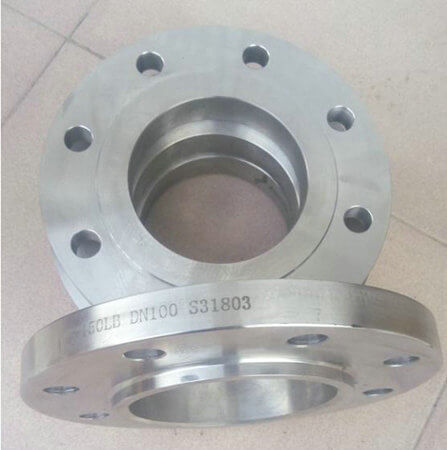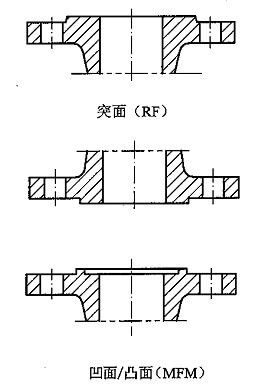Raised face flange and concave and convex face flange
Flange is used for the connection between two devices. The abbreviation refers to the form of the sealing surface. There are holes on it. The two flanges are connected by bolts. It is generally used for The mutual connection between

flanges
the shaft and the shaft is also used for the connection between the pipe ends; it is a detachable connection of a set of combined sealing structures that are connected by flanges, gaskets and bolts. The thickness of flanges with different pressures is different, and their use forms are also different.
Commonly used butterfly valves include wafer butterfly valves and flange butterfly valves. Wafer type butterfly valve uses double-head bolts to connect the valve between two pipe flanges. Flange type butterfly valve has flanges on the valve, and the two ends of the valve are flanged to the pipe flanges with bolts.
For the most common raised face flanges and concave and convex face flanges, in the flange connection, the raised face flange needs to be matched with the concave face flange, commonly known as one male and one female, and the raised face flange should be matched with the raised face flange. Generally speaking, raised face flanges should also be a kind of flat flanges, code-named RF, and the RF face can only be linked with the RF face. The code name of the raised face flange is M, and the M face flange needs to be connected with the FM face. One is female FM (Female Male), and the other is male M (Male). The pressure on the M/FM side is better than that on the RF side. Raised face flanges and raised face flanges are used in pairs, and the code name is RF. The comparison chart of the two is as follows:

RF, MFM flanges
The angle between the sealing surface of the raised face flange and the flange bolt connection surface is 45°, and the sealing surface of the concave and convex flange and the flange bolt connection surface are 90° angle, that is, the two sides are perpendicular .
Raised face flanges are more commonly used in the market, and generally there is no problem below 2.5MPa. Concave-convex flanges are more expensive and have better sealing effect, so the applicable pressure level is higher. When designing, it is more troublesome. For example, when you mention the equipment condition diagram, you must indicate what type of method it is. Lan, and then when the statistics take over the material, it is another matching flange.
TH Valve is a professional manufacturer of butterfly valve, gate valve, check valve, globe valve, knife gate valve, ball valve with API, JIS, DIN standard, used in Oil, Gas, Marine industry, Water supply and drainage, fire fighting, shipbuilding, water treatment and other systems, with Nominal Diameter of DN50 to DN1200, NBR/EPDM/VITON, Certificates & Approvals: DNV-GL, Lloyds, DNV, BV, API, ABS, CCS. Standards: EN 593, API609, API6D
Related news /knowledge:
7 types of flange sealing surface: FF, RF, M, FM, T, G, RTJ;
What is butt welding? (2);
What is butt welding? (5)- flash butt welding;
Features and structure drawings of flange butterfly valve



 © Copyright 2020 Tianjin Tanghaidongyang Valve Co., Ltd. All Rights Reserved.
© Copyright 2020 Tianjin Tanghaidongyang Valve Co., Ltd. All Rights Reserved.